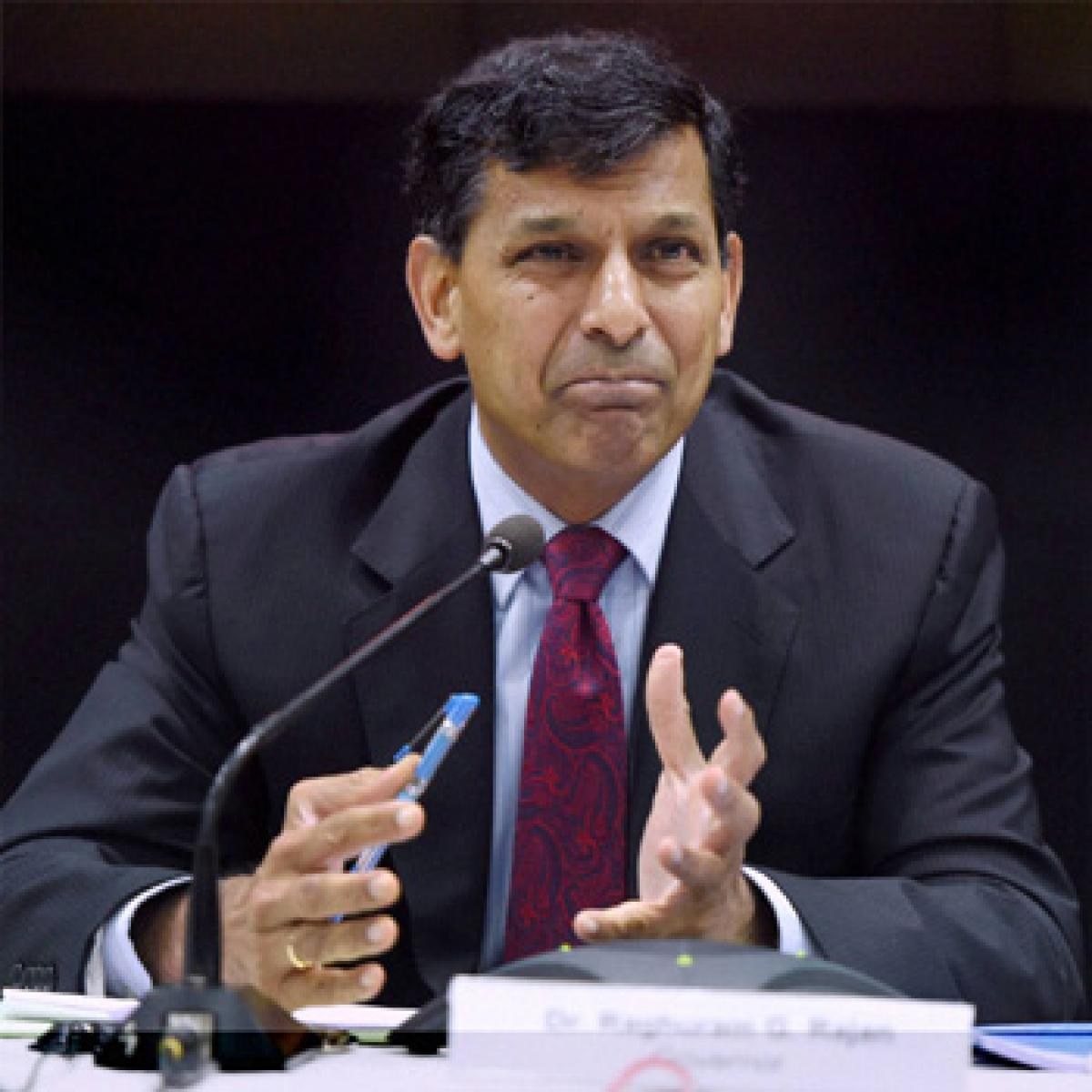Live
- Hyderabad Saree Festival 2024 kicks off in a grand manner
- Speed up Veligonda project works, CPM urges govt
- 10 career opportunities with a public policy degree
- TG Medical Council cracks whip on fake doctors
- TTD takes up mammoth waste management exercise
- Celebrating the power of communication
- Standing at work can actually be detrimental to BP
- Adani US bribery case reaches SC
- Prez, PM to address special event to mark Constitution Day
- I owe every film of mine to Vijay Sethupathi: Eashvar Karthic
Just In

At last, Raghuram Rajan has relented and cut the repo rate by 25 basis points to 5-year low of 6.5 per cent. It’s a bit of a sigh for the industry, though a cut of up to 50 bps has been longed for. Despite signs of recovery in oil prices, which could stoke inflation in the coming months, continuing weakness in rupee and moderate drop in retail inflation,
At last, Raghuram Rajan has relented and cut the repo rate by 25 basis points to 5-year low of 6.5 per cent. It’s a bit of a sigh for the industry, though a cut of up to 50 bps has been longed for. Despite signs of recovery in oil prices, which could stoke inflation in the coming months, continuing weakness in rupee and moderate drop in retail inflation, the central bank has responded to distress calls to provide the much-needed fillip to the economy.
Endemic uncertainty on global and domestic fronts has made economic pundits predict India may not grow more than 7.6 per cent, though fastest globally, and plead that industry needs more demand stimulation to help nation clock 8 per cent growth rate needed to generate jobs commensurate with high unemployment levels. RBI agreed with them on Tuesday.
Though the latest Nikkei/Markit Manufacturing Purchasing Managers' Index points to surge in new orders, there has been no discerning trend of a surging economy as yet. Wholesale price inflation has been in negative zone for the past 16 months, indicating an underlying sluggishness in economy. Lack of credit pick-up in manufacturing too called for the RBI attention.
Finance Minister Arun Jaitley, too, since the February 29 budget, had been urging the central banker to go easy on the rate front to give a leg-up to the industry. The resilience of economy which withstood global economic turmoil needed to be propped up, he stressed time and again.
Rajan is clearly appreciative of the possibility of a once-in-a-century three-year-long drought in the country, which has already seen back-to-back droughts. A major reason for the hesitancy of Rajan to lower the rates was poor transmission of rate cuts by banks to consumers, apart from inflationary concerns. He lowered the repo by 125 points to 6.75 per cent last year.
But tight liquidity in the system and higher savings rates saw banks passing on only about 50 per cent of the benefit to consumers. Yet, the recent reduction in small savings rates and fixing of lending rates on marginal cost of funds in place of average cost of funds ought to prod better transmission of rate cut by the banks, at least this time. Till that occurs and inflationary conditions ease further, the central bank may not go for further rate cut this year.
For his part, Jaitley felicitated the accommodative stance of the RBI, by sticking to fiscal prudence and fiscal deficit target at a nine-year low of 3.5 per cent for the current fiscal. Reining in of fiscal stimulus urge leads to restraint in borrowings as well, and hence enough room for the industry in the borrowing market.
As major reforms like GST and land acquisition law are still a far cry, the economy needed some kind of a trigger to fire on all cylinders. As such, it was left to the RBI to tune the monetary policy to spur the domestic demand. Hopefully, this would see more action in reviving stalled projects, too, wherein several lakh crore funds are stuck.

© 2024 Hyderabad Media House Limited/The Hans India. All rights reserved. Powered by hocalwire.com







